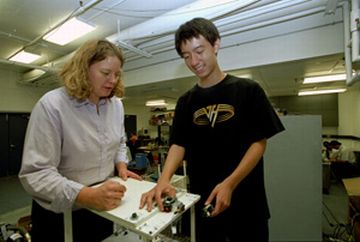
We can say that the first step toward implementing wireless sensors for structural control in real buildings and structures has been successfully taken, though the first test of wireless sensors was performed in the simulated structural control of a model laboratory building.
Hats off to Shirley J. Dyke, an earthquake engineer at Washington University in St. Louis for performing this test successfully. Once successfully implemented in real building, these wireless sensors can be used requiring less manpower and far less remodeling of the existing structures.
To limit damage from a simulated load of earthquake, Shirley along with other engineers has combined the wireless sensors with special controls — called magnetorheological dampers (or MR-damper).
Dyke said,
This (wireless) is where structural control technology is going. If you put a wired system in a building, the cost can be prohibitive. Soon, wireless sensors will become even cheaper, making this a nice application. It will be much easier putting wireless sensors into a building compared with taking walls out and installing wires and cables.
Approximately 50 Japanese structures used wired sensors for structural control with most of these using a variable orifice damper, Dyke estimates. She said that both Japan and China feature one magnetorheological damper-controlled structure.




